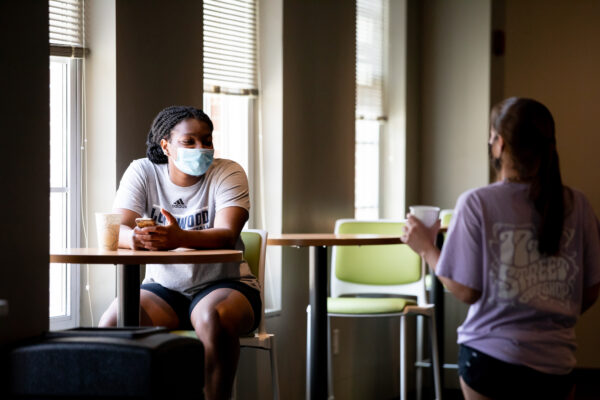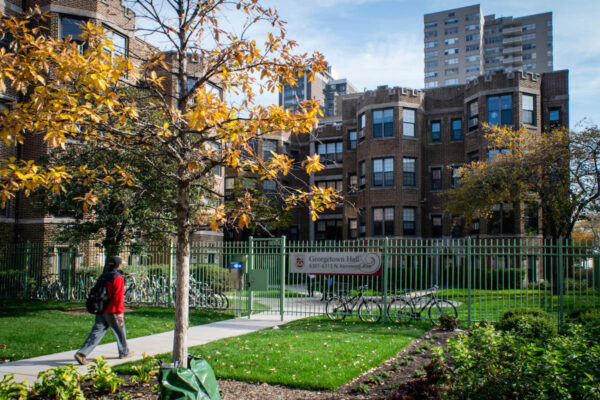By Kristi Hottenstein, Rhonda Phillips, Kara Rabbitt, Suzanne Wilson Summers, and Gabriela Weaver
Over a year ago, the coronavirus upended our lives and our institutions. The pandemic, along with a revived racial justice movement, has provided higher education institutions with a greater understanding of who we serve and prompted a more honest assessment of how we have served them both before and during COVID. With vaccines now available and campuses preparing for a return to “normal,” higher education leaders must ask what we have learned about our institutions’ capacity for change and how we will incorporate that learning into a post-COVID future, not just in terms of teaching and learning but also in considering equity and inclusion. The question before us is, how will we translate our good intentions into practice?
The pandemic plunged higher education into a massive social experiment for which no control group existed. Although every group and sector has felt the effects, these impacts have varied widely and had the greatest impact on minoritized communities. Our experiences through this period provide a unique opportunity to move toward a version of higher education firmly centered in equitable, collaborative, and humane practice, requiring future leaders to take a more nuanced and multi-dimensional view of equity and how it manifests during both crises and normal times.
When the pandemic hit, the authors served as ACE Fellows embedded in institutions across the country. From this unique vantage point, we observed our host and home institutions’ COVID-19 responses while also engaging with senior leaders representing diverse higher education sectors across the country. These leaders shared with us their candid reflections, challenges, and insights about leading their campuses through this period.
Drawing from these experiences, we serve as the editorial team for a forthcoming book that explores the intersection of equity and leadership during this crisis. Our study of this period finds that in the short term, decision makers sought to balance operational continuity and efficiency with equity considerations, but that one-size-fits-all policies which fail to recognize the differential policy impacts on different segments of communities can reinforce inequities.
We also found that crisis-based decision-making exposed inequities that leaders had not recognized or whose impact they had not fully understood. As Adriana Kezar and her fellow authors point out in their recent study for ACE, equity impact at scale requires shared leadership that operates both horizontally and vertically across institutions. Finally, we noted that crisis conditions and ensuing institutional decisions further compounded inequities arising from the intersectional identities of both students and employees. These overarching themes played out in a variety of ways among different groups in our academic communities. We will discuss three examples here, considering equity impacts related to gender, socioeconomic status, and racial and ethnic identities.
Much has been written about the devastating impact of the pandemic on women’s workforce participation both in the United States and globally. Gender inequities surfaced quickly as women wrestled with the disproportionate burden of both family caregiving and institutional service. In higher education, this crisis rendered evident the ways in which workload distribution, course and meeting schedules, and promotion and tenure processes were created in an era when most faculty positions were held by men and showed that the growing number of women in the academy over the last two generations has failed to result in a fundamental reorganization of academic life. COVID-19 conditions have exacerbated tensions between familial and institutional caretaking and professional advancement for women, both faculty and staff. The potential consequences of a failure to rethink our practices now may result in fewer women in leadership roles, as well as reduced earnings and retirement resources as fewer women advance. For women of color, these impacts are further exacerbated by the pandemic’s disproportionate impact on African American and Latinx communities in particular, as well as increasing anti-Asian sentiments.
While we applaud institutions that have responded to women’s calls for action by attempting to address these concerns by, for example, permitting recalculations of the tenure clock for faculty, it is clear that we can no more afford “gender-blind” policies than we can “race-blind” policies. Colleges and universities reside within broader social and economic structures, and our policies must reflect this awareness. Mentoring programs, flexible scheduling, and policies for retention, promotion, and tenure are all areas ripe for reconceptualization to support the complex gendered realities for faculty and staff.
For low-income students and employees, the pandemic has increased the impact of prior challenges. As Jelani Cobb shared at the 2021 AAC&U Conference, “COVID pulled back the covers of euphemisms for what had existed prior to the pandemic,” and the economic vulnerability of low-income students, adjunct faculty, and staff has been laid bare through this period.
Numerous national surveys revealed that concerns over the impact of economic disparities among students were central to pandemic-related decisions. In a post-pandemic future, our institutions must now translate this increased awareness into concrete policies and supports. In a broader sense, the pandemic has invited us to redefine and better understand the complex realities of most college-students. The well-intentioned CARES Act, for example, inadvertently created inequities due to its out-of-date understanding of college students as predominantly middle class, 18–21 years old, attending college full time. When community colleges and public regional universities now serve as the primary entry points to higher education for the majority of students, many of them from minoritized populations and many attending part time while working and balancing family responsibilities, it is time for federal, state, and institutional policies to better reflect an understanding of the “new majority” student experience.
The pandemic, likewise, revealed the vulnerability of low-wage employees on our campuses. Fiscal challenges exacerbated by the pandemic have had a severe impact on contingent faculty members, many of whom have lost employment in response to enrollment declines. Staff at the lower end of the wage scale have been hit hardest as institutions grappling with pressing fiscal needs implement furloughs and layoffs or reclassify positions from benefit to non-benefit status. Custodial staff, food workers, and other essential staff, often from minoritized groups, have borne disproportionate health risks as they are required to engage in on-campus labor while many higher paid and predominantly white employees have been able to work remotely.
Given the well-documented disparate impact of the pandemic on communities of color, institutions must intentionally ensure that our colleges and universities don’t emerge from this period less diverse, providing less social and economic benefit for the regions they serve, and closing key points of access to the transformative power of higher education. Higher education institutions have a moral imperative to move beyond calls for equity to action by serving employee and student needs through humane and effective processes and policies.
Nationwide, we have seen the racialized impact of COVID-19’s health threat converge with urgent demands for racial justice in the aftermath of the killings of George Floyd, Ahmaud Arbery, Breonna Taylor, and Daunte Wright. The pandemic’s calamitous impacts on African American and Latinx enrollments in higher education became clear in spring 2020 as leaves of absence due to family and financial circumstances increased six-fold for these students. Programs aimed at increasing diverse enrollments faced new challenges in summer 2020 as social movements protesting violence against communities of color overlapped with campus outreach and bridge programs designed to support minority populations transitioning into college. Sharp enrollment declines continued into the fall, while, in light of the racialized trauma experienced by many students of color, institutions confronted the need to render their virtual learning and engagement more fully inclusive.
Many BIPOC faculty and staff, already experiencing disproportionate impacts from COVID-19 and well acquainted with microaggressions on and off campus, faced similar racial trauma. Certainly, institutions must acknowledge the real pain and damage that remain from institutional policies and practices that have directly or indirectly maintained racial gaps for far too long, but only sustained efforts, accompanied by personal and institutional accountability measures modeled by senior leaders, can build significant and lasting change.
These three areas of equity concerns that have arisen in the COVID-19 environment, among others, including LGBTQI+ experiences, invite us to center the reality of differential equity impacts in our future planning. Our institutions have no immunity to the structural, contextual, and systemic inequities that exist in the broader society. Leaders must thus incorporate a more inclusive frame of equity and inclusion in our planning for a post-pandemic “normal.” It is not enough to say that we recognize the existence of inequities and injustices; we must directly address them and find solutions that fully value all members of our communities by acknowledging the full complexities of their lives. The COVID-19 pandemic provides us an unprecedented opportunity to chart a better, new direction for ensuring equity and inclusion are front and center in carrying out higher education’s mission.
If you have any questions or comments about this blog post, please contact us.


